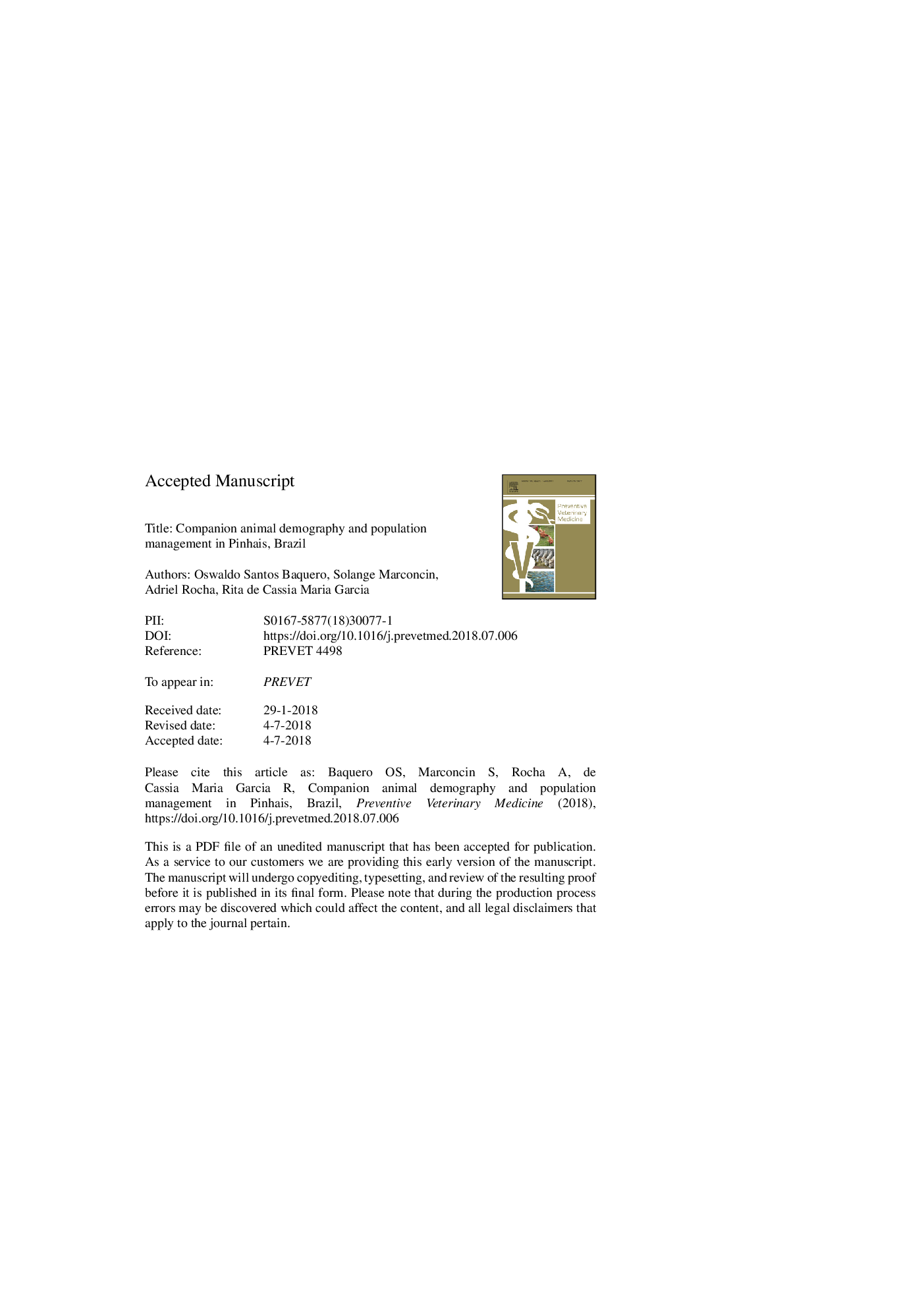| Article ID | Journal | Published Year | Pages | File Type |
|---|---|---|---|---|
| 9954666 | Preventive Veterinary Medicine | 2018 | 34 Pages |
Abstract
We used a two-stage cluster sampling design to estimate the population sizes of owned dogs and cats in Pinhais, Brazil. For dogs, we simulated the population dynamics using a compartmental model of coupled differential equations, incorporating uncertainties in a global sensitivity analysis and identifying the most influential parameters through local sensitivity analysis. The calibration with the known human population improved precision in population size for dogs but not for cats. Population pyramids had a wide base, and the apparent population turnover was lower than the net population gain. Most immigrants came from the state capital. Projected dog and human growth rates between 2017 and 2027 were positive and similar, while the projected proportion of sterilized dogs decreased over the same period. The main reason provided for not sterilizing animals was the cost of the procedure, even though there were free alternatives. The demographic characterization made in the present study will serve for future comparisons and as a reference in epidemiological contexts. The simulations indicated what to expect in specific scenarios and stressed the need to increase current sterilization rates.
Keywords
Related Topics
Life Sciences
Agricultural and Biological Sciences
Animal Science and Zoology
Authors
Oswaldo Santos Baquero, Solange Marconcin, Adriel Rocha, Rita de Cassia Maria Garcia,
